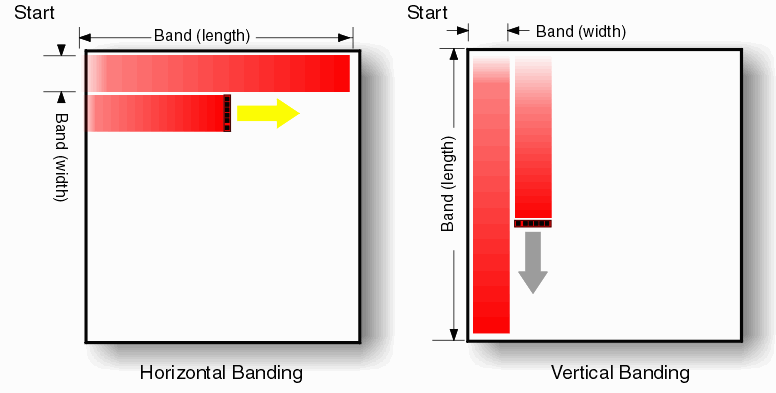Bands
The ODB_RIP normally divides the image into bands. This allows one to process very large areas at high resolution without running out of memory. Bands can run horizontally or vertically as needed to match the machine's physical movements.

The band's "width" is a function of the band's length, DPI and memory. The following equation gives the band width in terms of available memory:

Example
Your overall image size is 20 x 24 inches and you are ratsterizing (in vertical bands) at 5080 DPI. You allocated a buffer for the bitmap of 128 MB. How wide will a band be and how many bands are needed to cover the entire image?
width = [128E6/8]/[24 x 5080 x 5080] = 0.0258 inch
To cover the entire 20 inch width of the image one would need:
number of bands = 20 / 0.0258 = 775.19 (776)
Overriding Band Size
There may be applications where the width of the band needs to precisely match the physical aspects of the imaging head. For example, the imaging head may be an array of 1024 LEDs so the width of the band must be exactly 1024.
In this case it is possible to use the ODB_RipSetup argument: -bitmap_clip_dim:1024

